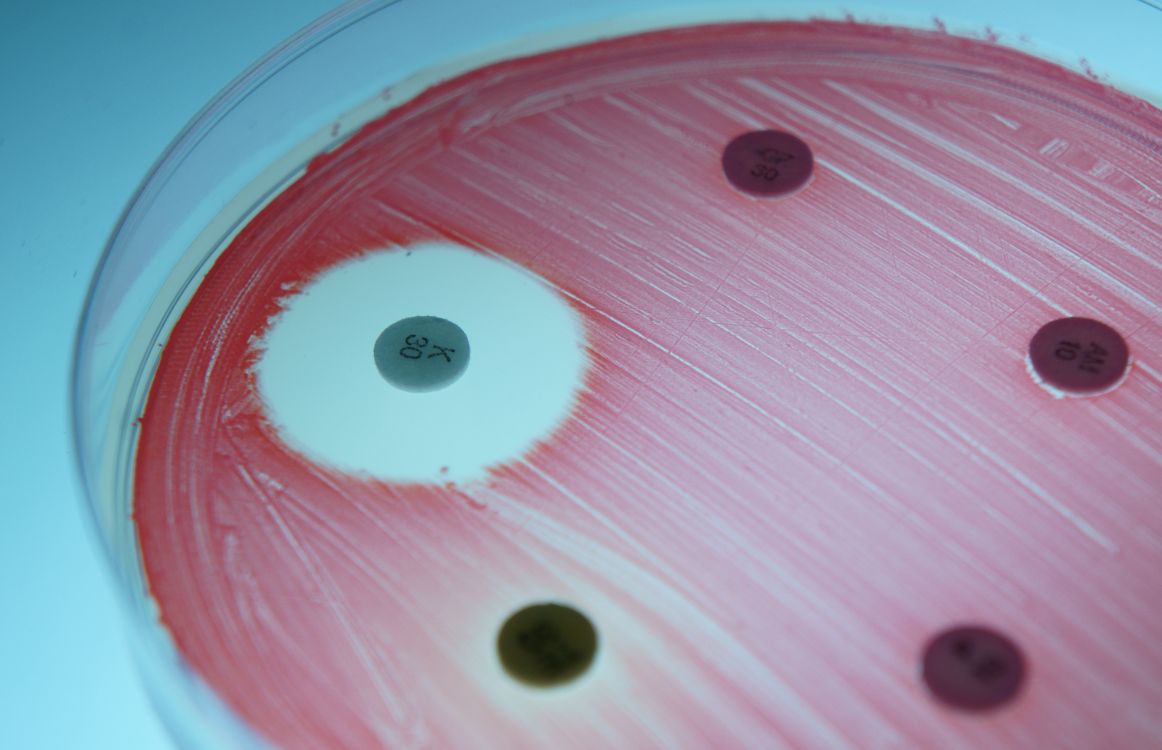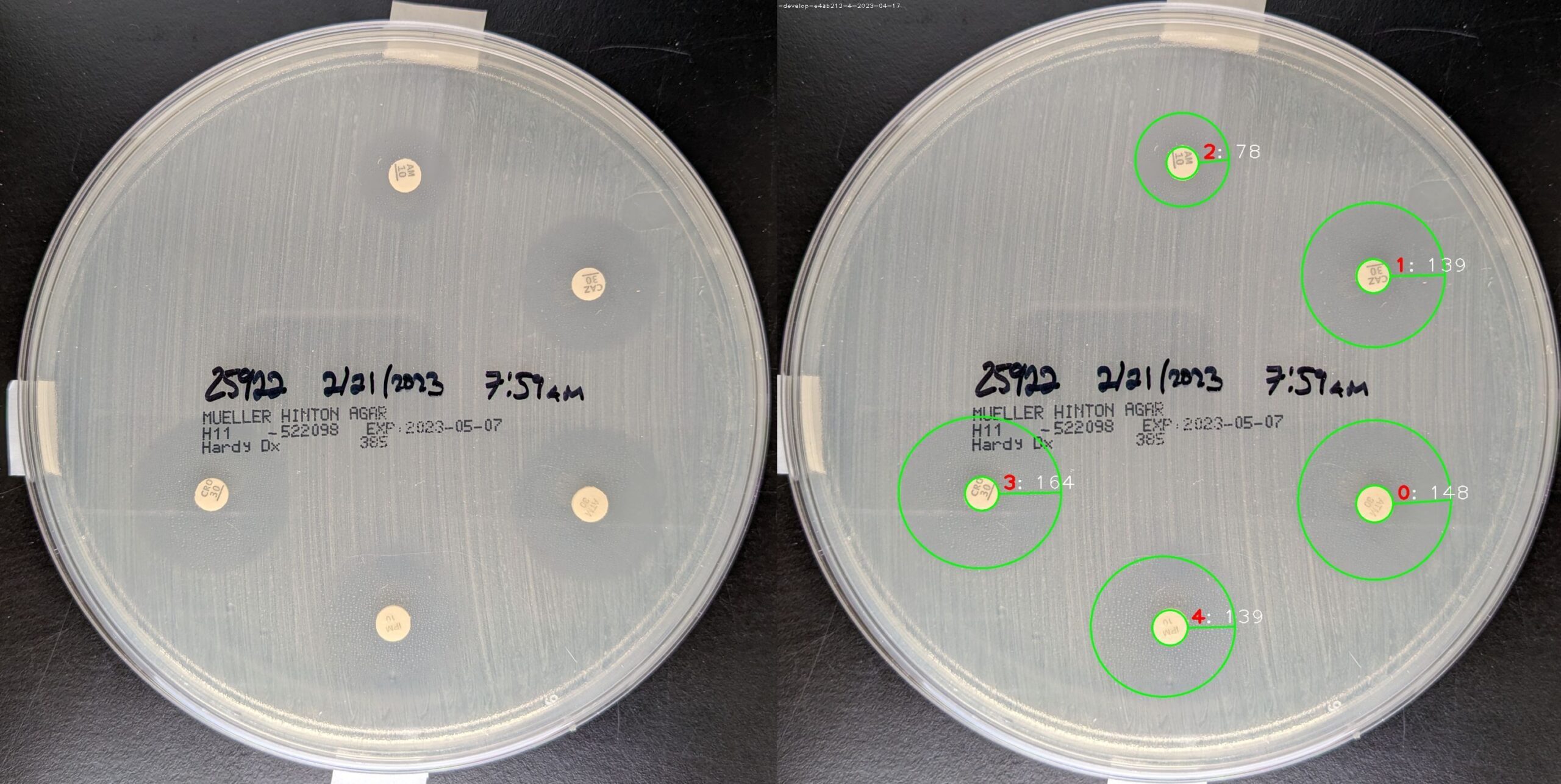How to Measure the Zone of Inhibition: Kirby-Bauer Test

A simple process that has been streamlined by experts on the matter is still prone to error. Why? Humans of course. Figuring out how to measure the zone of inhibition is a step-by-step process outlined here. But you may want to rely on AI to minimize your potential for mistakes.
What Is the Kirby-Bauer Test?
The Kirby-Bauer test is the common name for the disk diffusion test. Once Penicillin was introduced into society in the early 1900’s by Arthur Fleming, scientists in the field of medicine and pharmaceuticals predicted that would be the end of infectious disease. All we had to do was give penicillin for the infection and we could wipe it out.
Right?
Not so fast.
Two problems quickly arose. First, many infections became resistant to penicillin and to subsequent antibiotics that were developed, creating superbugs. Second, viruses do not respond to antibiotics. In the early days, we treated antibiotics like a blanket treatment for virtually any illness. This approach resulted in a population of citizens with gut issues, as antibiotics kill bacteria in the human body, including the healthy bacteria in our guts. It also resulted in the rise of ever increasing levels of infection, bacteria that was harder and harder to kill.
In response, scientists realized they needed to be more methodical with the application of antibiotics for illness.
To that end, they developed a laboratory test called disk diffusion, wherein specific bacteria are treated with specific antibiotics on an agar plate to see if the antibiotic is effective for that specific bacteria.
In practical terms, a doctor could take a swab of saliva from a person who is ill and apply it to the agar plate. Then, that plate could be treated with several different antibiotics on tiny disks. The results would let the scientists know which antibiotics would actually be effective against the person’s infection, and those antibiotics could be administered.
This targeted approach was effective, but the measurements, the protocols, and the applications were not uniform across the globe. There was room for tremendous error and laboratories had not strict guidelines to follow.
It was only in the 1960 when two scientists by the names of W.M.M Kirby and A.W. Bauer developed a streamlined procedure for the disk diffusion test. The World Health Organization adopted their procedure, and the disk diffusion test has henceforth been known as the Kirby-Bauer test.
What Is the Zone of Inhibition and Why Does It Matter?
One of the most important factors during the Kirby-Bauer test is the zone of inhibition. The zone of inhibition is the area around those tiny antibiotic laden disks planted in a bacterial culture that spreads out and pushes back the bacteria.
The idea is that you would swap an entire agar plate with a bacterial culture, fully covering the plate. Then, you plant the disks soaked in antibiotic into the culture. Within 24 hours, you can tell which, if any, antibiotics are effective against that bacteria by the small, clean circles that form around the circular disks.
The zone of inhibition is the entire space of those clean circles.
How to Measure the Zone of Inhibition: Kirby Bauer Test
To measure the zone of inhibition, you must first ensure you have done the test correctly.
The American Society for Microbiology recommends Mueller-Hinton agar plates be used as they are widely considered the best medium for the task. Your best bet is to purchase the agar plates already prepared to avoid human error trying to prep your own plates.
Check that the pH of your agar is between 7.2 and 7.4. Any lower or higher than that may yield erroneous results.
If possible, select semiautomatic disk dispensers for placement of your disks so you avoid misplacing your disks yourself. If you do decide to place the disks yourself, be sure to place each one with sanitized forceps away from the edge of the plate so you allow for a full circle zone of inhibition.
When culturing your agar plate, swipe the swab back and forth across the plate in a tight zigzagging motion, rotate the disk 90 degrees and swab again the same way, then rotate 90 degrees one more time and swab again.
Once you have placed your disks, place the lid and turn the plate upside down in the air incubator at 35 degrees Celsius for 24 hours.
Once the 24 hours are up, you will be able to measure the zones of inhibition.
Hold the plate upside down over a black surface and raise it a few inches from that surface. Take a ruler or a caliper and measure the diameter of the entire zone, including the disk, and measure up to the next millimeter.
Use your naked eye and no enhancements like a magnifying glass.
If you cannot measure the entire diameter for any reason, you can measure from the center of the disk to the outside edge of the zone of inhibition and then multiply that number by 2.
You can then mark your zone size down on your recording sheet.
If bacteria has grown up to the edge of the disk, your recording is 0.
Oculyze Image Recognition Software

Of course, the human eye is flawed. We make mistakes. We count incorrectly. It happens.
To avoid these counting errors, you could simply upload an image of the bottom of the petri dish to Oculyze’s Automated Disk Diffusion analyzer and get an accurate measurement of each zone of inhibition quickly.
This option allows you to breathe a little more easily in the lab and free up time and energy better spent on issues that require your attention.
You can test the Oculyze Disk Diffusion Analyzer App for free here.
With our Image Analysis Platform, you can save hundreds of hours of work that would have gone into manual labor. Image analysis automation provides you with accurate results and secure data management in less time, so you can save your resources for something that brings more value to your business.
Let artificial intelligence do the hard work for you. Start saving time and costs now! Want to know more? Contact us and we’ll be happy to help!
Sources:


